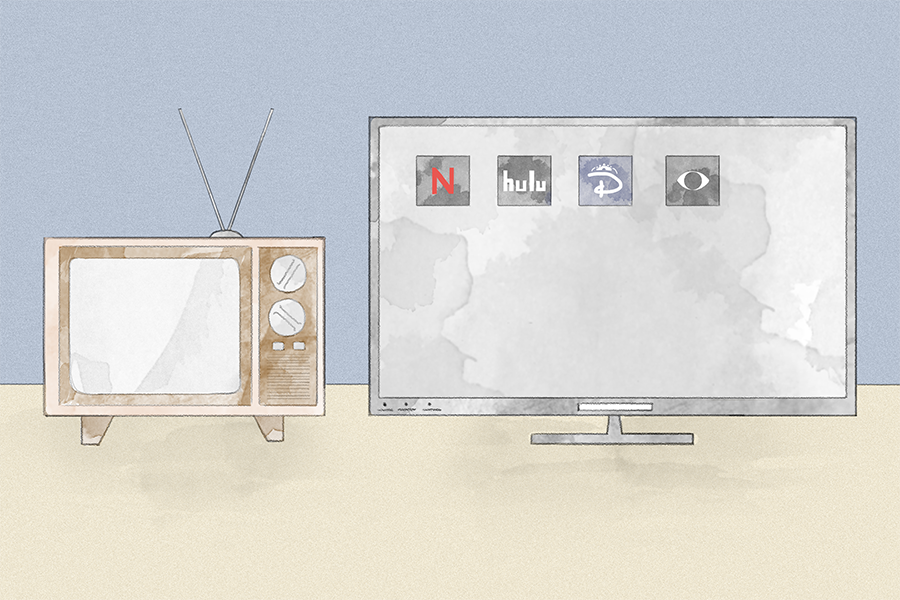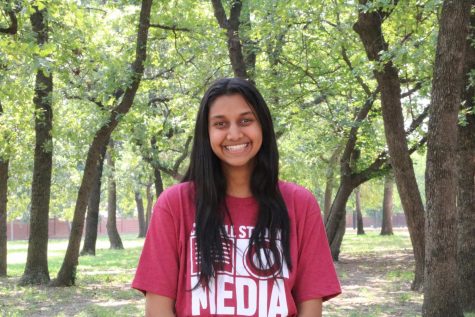Decade Wrap-Up: Streaming services dominate decade of change in entertainment
Rather than flipping through channels or using DVDs, people in the modern era use applications such as Hulu, Netflix and Disney Plus to watch television. The Sidekick staff writer Anjali Krishna analyzes this trend, along with other changes in TV across the past decade.
December 18, 2019
Today, the idea of settling in to watch television at its programmed time seems odd. Streaming services such as Netflix and Hulu rule television, allowing us to watch whenever we want, wherever we want and nearly whatever we want.
“When we were little, we only had one TV upstairs and that TV could only play VHS tape,” Coppell High School sophomore Sophia Priest said. “It was a big hassle to set up, and we would only be able to watch ‘Hello Kitty’, because that was the only tape we had. I can’t imagine having to do that when I want to watch TV now. I could go on my phone and have it up in two seconds, and I can even mirror it onto my TV.”
In today’s world of streaming video, no television is unaccessible. While Netflix, Hulu and Disney+ dominate the market with their wide range of television, smaller services, such as HBO Go, offers 131 shows, compared to Netflix’s 152, just those airing on their channel.
“If you can’t find what you’re looking [for], you can always find it on another streaming service,” Priest said. “Why would I use cable when I can find everything I want at the tip of my fingers? Streaming services make watching TV much easier; maybe that’s why we all watch so much TV now.”
Another changed aspect of television is the schedule for watching TV.
“If news was on at 8 [p.m.] and my show at the same time, my TV time was over and my dad got to watch,” CHS sophomore Harry Hook said. ”I would have to go watch in another room on a small TV. Now that would never happen. My dad could watch news on his phone whenever he [wants], and I could watch my show somewhere else.”
When technology changed the mode of television, we fundamentally altered the way we would see it in our daily lives. Binge-watching is now more common – something that was more challenging before unless a channel decided to play a marathon of one show or one rolled hours of recordings on a VHS tape, and sitting down to watch an episode or movie as it airs at a specific time now seems unfathomable. From this, new challenges have emerged. There are more than 200 streaming services today and as the amount of them grow, TV shows grow with them. With this, television becomes thinly spread across a variety of streaming services, defeating the point of creating them in the first place.
“It used to be that Netflix had anything that was worth watching,” CHS sophomore Isabelle Ortigoza said. “Now, we have Netflix, Amazon, Hulu and cable, but I won’t be able to watch Disney movies on any of them because Disney now has Disney+. Netflix will be losing shows I like, and I don’t want to pay for another subscription service.”
One of the winning aspects of streaming television in the 2010s was the lack of ads. Netflix was blissfully free of interruptions, which was what many consumers considered one of its best features. From this, problems arise for a less popular mode of consuming television: YouTube.
YouTube’s many episodes of various shows come free if you can find them, but advertisements are peppered throughout popular content. Similarly, other streaming services, such as CW and Lifetime, offer free weekly episodes, but have almost three-minute ads in between segments, making it as inconvenient as cable television.
In a decade of change, we binge-watch, we pirate, we procrastinate while we have tests the next day, and the television technology of the 2010s has made it all possible.
Follow Anjali (@anjalikrishna_) and @CHSCampusNews on Twitter.












